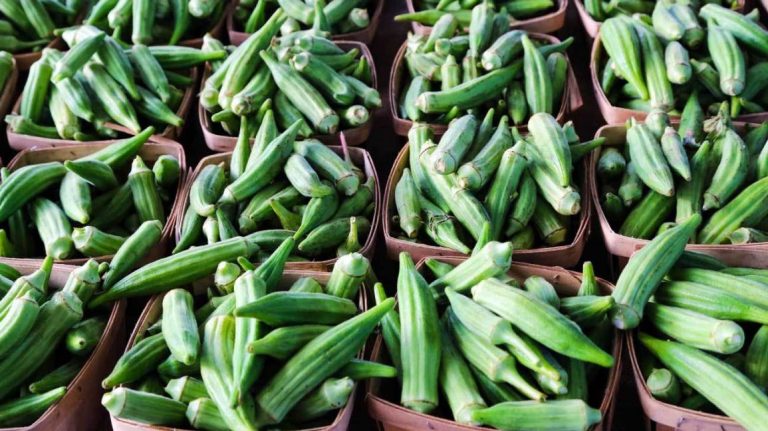
year=2008 volume=2 issue=4 spage=200 epage=203 aulast=Sunilson The present study further suggests that phenolic compounds of the roots H esculentus provide a good source of antioxidants that could offer potential protective effects against lipid oxidation and which could be exploited to make a hepato protective formulation Okra contains flavanoids that may have anti-oxidant and hepatoprotective activities.
#Okra health benefits free#
In a study entitled “Antioxidant and hepatoprotective effect of the roots of Hibiscus esculentus Linn”.of the Department of Pharmacognosy, School of Pharmacy, Masterskill University College of Health Sciences, Selangor, Malaysia, showed that (H.esculentus) okra root ethanol extract posses in vitro free radical scavenging activity which was well comparable with Silymarin. The anti adhesive qualities of okra were assumed to be due to a combination of glycoproteins and highly acidic sugar compounds making up a complex three-dimensional structure that is fully developed only in the fresh juice of the okra fruit. Okra fresh juice preparation inhibited the bacterial adhesion almost completely in the gastric mucosa. In a study entitled “Glycosylated compounds from okra inhibit adhesion of Helicobacter pylori to human gastric mucosa”, the crude polysaccharide isolated from the fresh juice by ethanolic precipitation showed strong inhibitory effects. The results have shown that by administration of okra extracts to diabetic rats, there was a significant reduction in blood glucose level and the lipid profile level also have normalized. In streptozotocin-induced diabetic rats”, suggests that extracts from okra could be developed as a prospective phytomedicinal plant against diabetes mellitus. In a study published in “Journal of Pharmacy & Bioallied Sciences 2011” entitled “Anti diabetic and antihyperlipidemic potential of Abelmoschus esculentus (L.) Moench.
#Okra health benefits skin#

It is tapering in shape with ribs along its length. Okra fruit or pod is usually green in color with a new red variety. Okra seed pods are 3 to 10 inches in length about ½ to 1 inch wide.

Okra flowers are large with 5 petals colored white or yellow and sometimes with a reddish-purple base. Okra plant can grow up to 9 feet in height with heart shaped leaves that is palmate with 5 to 7 lobes. Okra is somewhat related to cotton and hollyhock. Okra is a hardy plant that can grow even with less water and in hot conditions. Okra is an annual herb that is widely cultivated for its edible green seed pods in tropical, subtropical and warm temperate climates. Okra (Abelmoschus esculentus Moench, Hibiscus esculentis Linn), known in many English-speaking countries as lady's fingers or gumbo, is a flowering plant in the mallow family. Scientific Name: Abelmoschus esculentus Moench, Hibiscus esculentis LinnĬommon Names : Okra, Gumbo, Lady fingers (English), Huang su kui (Chinese), Gombo (Spanish), bhindi (Hindi/Urdu), krachiap mon (Thailand), bamya (Arab Ochro, Okoro, Quimgombo, Quingumbo,


 0 kommentar(er)
0 kommentar(er)
